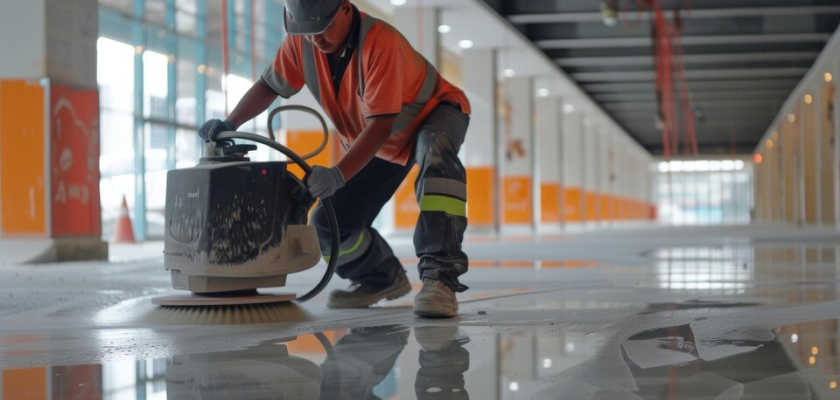
Proper surface cleaning is crucial for ensuring optimal adhesion of epoxy and industrial flooring materials. Begin by thoroughly sweeping and vacuuming the area to remove loose debris. Next, use a degreaser or specialized cleaning solution to eliminate oils, grease, and other contaminants that can interfere with the bonding process. For stubborn stains or deeply embedded contaminants, consider using a floor scrubber or pressure washer to achieve a pristine surface.
Inspect the floor for cracks, holes, and other imperfections that could compromise the integrity of the new flooring system. Fill smaller cracks with an epoxy filler or specialized concrete patching compound. For larger cracks or damaged areas, consider using a concrete repair mortar or self-leveling compound to create a smooth, even surface. Allow sufficient drying time for all repair materials before proceeding with the next steps in the preparation process.
Surface profiling is essential for creating the ideal texture for optimal adhesion of epoxy and industrial flooring materials. The most common method for concrete floors is shot blasting, which uses small steel balls propelled at high speeds to create a textured surface. Alternatively, diamond grinding can be used for smoother surfaces or when working with softer concrete. The goal is to achieve a surface profile that resembles medium-grit sandpaper, providing ample opportunity for the new flooring material to bond securely.
Excessive moisture in concrete substrates can lead to flooring failures and costly repairs. Conduct thorough moisture testing using methods such as calcium chloride tests or relative humidity probes to determine the moisture content of the concrete. If moisture levels exceed the manufacturer's recommendations for the chosen flooring system, implement appropriate moisture mitigation techniques. These may include the application of moisture barriers or vapor retarders to prevent moisture-related issues and ensure the longevity of your new flooring.
Proper floor preparation is the foundation for long-lasting, high-performance epoxy and industrial flooring systems. By following these essential techniques, you can ensure optimal adhesion, durability, and appearance of your new flooring. Don't leave the success of your flooring project to chance – trust the experts at Firmstone Flooring to deliver superior results.